Der FC St. Pauli gewinnt sein siebtes Saisonspiel. Wer die letzte Szene des Spiels gesehen hat, wird sicher das Adjektiv „glücklich“ hinzufügen wollen. War es auch, denn das Spiel hätte wohl ein Unentschieden eher verdient gehabt. Und zweifelsfrei hat es einen Schönheitspreis verdient, auch wenn beide Trainer einmal mehr mit den defensiven Schwächen ihrer Teams zu kämpfen hatten.
(Titelbild: Peter Boehmer)
So schön der Heimsieg gegen Darmstadt auch war, so schön Fußball allgemein auch ist: Es gibt Wichtigeres und der FC St. Pauli und der SV Darmstadt 98 haben ein klares Zeichen gesetzt:
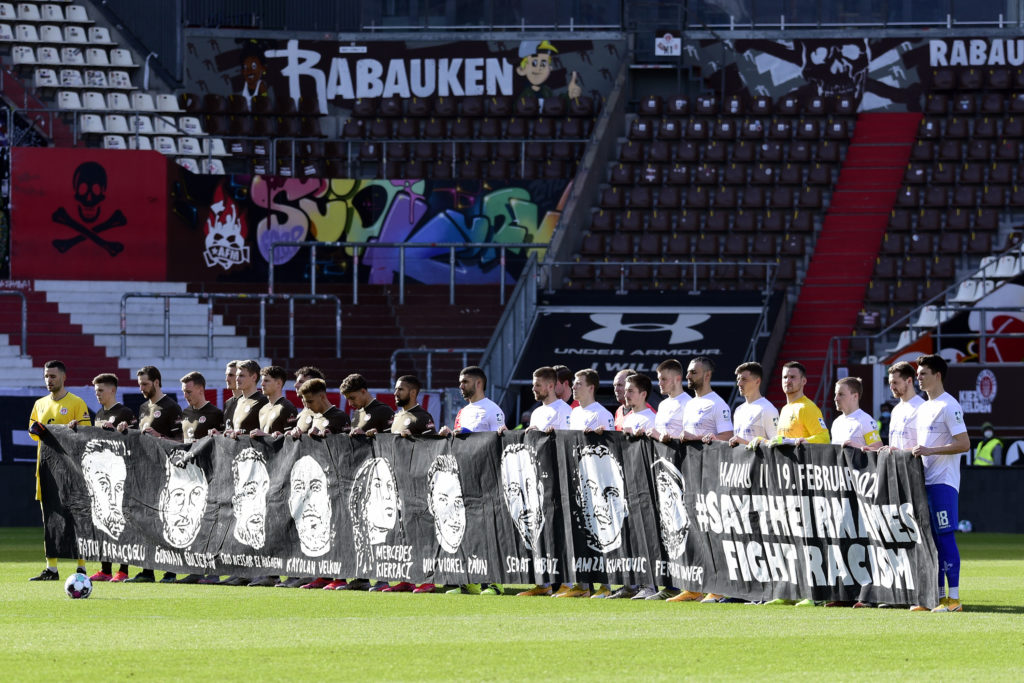
Die Aufstellung
Keine Veränderungen auf Seiten des FC St. Pauli. Ich hatte im Vorbericht maximal mit einer Änderung in der Innenverteidigung gerechnet, damit, dass Tore Reginiussen gegen Serdar Dursun spielen würde. Timo Schultz setzte aber auf Kontinuität und bot zum dritten Mal in Folge die gleiche Startelf auf.
Bei Darmstadt 98 gab es hingegen zwei Änderungen im Vergleich zum letzten Spiel gegen Osnabrück: Für die verletzten Herrmann und Clemens kamen Lars Lukas Mai und Tim Skarke rein. Von der Viererkette rückte Trainer Markus Anfang aber nicht ab. Das hatte ich anders erwartet.

Es war dann eine Art 4-1-4-1, die Darmstadt spielte. Allerdings wurde diese Formation sehr variabel gespielt. Linksverteidiger Holland interpretierte seine Seite etwas offensiver als Mai auf der Gegenseite. Und Marvin Mehlem agierte etwas tiefer als Kempe. Wenn das jemand als 4-2-3-1 oder sogar als 3-3-3-1 bezeichnen möchte, dann wäre das auch ok.
Die 1. Halbzeit
Beide Teams gönnten sich wenig Zeit für unbeschwerten Ballbesitz. Der FC St. Pauli griff in vorderster Reihe wieder auf das altbewährte Mittel der Manndeckung zurück: Daniel-Kofi Kyereh begleitete Sechser Nicolai Rapp konsequent, Marmoush und Burgstaller stellten die Innenverteidiger zu, ohne sie anzulaufen.
Eher abwartend startete der FCSP auf der Außenbahn im Pressing. Zuletzt wurden auch gerne die Außenverteidiger bei Ballbesitz konsequent von Zalazar und Becker angelaufen (gegen Heidenheim zum Beispiel). Das war zu Spielbeginn nicht der Fall, änderte sich aber im Spielverlauf zumindest partiell. Wenn die beiden Achter jedoch nicht anliefen, waren es Marmoush und Burgstaller, die die Außenverteidiger anliefen und dabei den Passweg zurück zum Innenverteidiger im Deckungsschatten zustellten, um den langen Pass zu forcieren.
Ganz kurz blitzte auch das doch recht einzigartige Einrücken der Lilien-Außenverteidiger im Ballbesitz auf (in meinen Notizen steht es mit ! in Minute 13:30). Allerdings habe ich das nur ein einziges Mal wirklich beobachten können, ansonsten war die Viererkette eher breit gestaffelt.
Die Lilien spielten ihr Pressing deutlich aggressiver als der FCSP: Der ballferne Außenverteidiger des FCSP wurde im Anlaufen ignoriert bzw. wurde vom gegnerischen Außenverteidiger an langer Leine bewacht. Alle anderen defensiven Spieler wurden mit hohem Tempo angelaufen.
Zu Spielbeginn zeigte sich der FCSP etwas pressingresistenter und konnte so die ein oder andere gefährliche Situation erspielen. Je länger die Halbzeit lief, umso mehr Übergewicht erspielte sich aber Darmstadt 98. Aus mehr Ballbesitz konnten sich die Lilien aber (noch) keine wirklich zwingenden Chancen erspielen.

(Martin Rose/Getty Images/via OneFootball)
Anders der FCSP, der direkt in der zweiten Minute durch Burgstaller bereits die Führung hätte erzielen können. Das holte er dann in der Phase nach, in der Darmstadt gerade am deutlichsten das Spiel diktierte. Das 1-0 des FCSP ist geradezu eine Blaupause für das, was dieses Team aktuell so stark macht:
Durch hohes Pressing (ich habe mir zum ersten Mal in dem Spiel notiert, dass die beiden Achter auf die Darmstädter Außenverteidiger pressten), wurden die Lilien zu einem langen Ball gezwungen, den Ziereis aufnahm und erst einmal kontrolliert zum Torwart spielte. Der legte weiter zu Lawrence, der nach links zu Paqarada schob (dieser Pass war in der ersten Halbzeit einer der Pressingauslöser für Darmstadt), der durch hohes Anlaufen der Lilien zurück zu Lawrence spielte. James spielte dann druckvoll die Linie links runter zu Zalazar, das Pressing von Darmstadt war immer noch hoch. Zalazar aber dribbelte sich um seinen Gegenspieler und schaltete den Turbo an und konnte seine drei (!) Verfolger auf Abstand halten. Es spielte zu Kyereh, der ebenfalls zwei Darmstädter Spieler ausdribbelte und dann, knapp 20m vor dem Tor quer zum freien Becker legte. Der spielte einen überlegten Pass in den Strafraum zu Ohlsson, der dort, warum auch immer, bereits anspielbereit wartete (weil er nach dem Dribbling von Zalazar einfach weiter durchgelaufen ist) und von rechts einen Querpass hereingab, der eigentlich zu nahe ans Darmstädter Tor gespielt ist. SVD-Torwart Schuhen konnte abwehren, aber direkt auf den Oberschenkel von Burgstaller, der dadurch aus drei Metern ins leere Tor einschießen konnte.
„Ballgewinne durch gut getimtes Pressing, Pressingresistenz im Aufbau, starke Dribbler, überlegtes Passspiel auch im letzten Drittel und Stürmer, die genau da stehen, wo sie stehen müssen.“
Das beschreibt das Spiel des FCSP aktuell recht gut.

(Martin Rose/Getty Images/via OneFootball)
Mit der Führung ging es in die Halbzeit, auch wenn Darmstadt direkt im Anschluss an das Führungstor richtig stark aufspielte. Und obwohl ich bereits in der ersten Halbzeit dachte, dass es ein richtig gutes Fußballspiel sei, sollte die zweite Halbzeit noch viel mehr bieten.
Vorher muss ich aber einmal mehr mein Herz an Eric Smith verschenken. Es ist so stark, was der auf der Sechs spielt. Er ist genau dieser physische Spieler, den der FCSP dort benötigt. Der steht nach nun vier Spielen in der 2.Liga bei unglaublichen 74% gewonnener Defensivzweikämpfe (damit ist er der deutlich stärkste Zweikämpfer der Liga auf dieser Position). Gegen Darmstadt waren es 8 von 11 Duellen, die er gewann. Hinzu kommen viele Klärungen und Interceptions (und dieses Mal auch offensiv richtig Gutes, dazu später mehr). Der Typ ist auf dem Feld total unscheinbar, aber macht so viel Gutes.
Die 2. Halbzeit
Mit Wiederanpfiff ging es direkt so weiter, wie die erste endete: Darmstadt 98 konnte sich ein Übergewicht erspielen und wurde nun, im Gegensatz zur ersten Halbzeit auch etwas zwingender, vor allem durch Standards, aber auch deshalb, da sie die zweiten Bälle größtenteils gewinnen konnten. Das Spiel wurde schnell. Und aufregend. Mir fällt es schwer da eine taktische Umstellung auszumachen, aufgrund derer die zweiten Bälle nun bei Darmstadt landeten.
Allerdings hatte der FCSP in der 57.Minute die große Chance auf das zweite Tor, nachdem Eric Smith mit einem übermenschlichen Pass auf Burgstaller das Darmstädter Pressing in Schutt und Asche legte.
Trotz dieser Chance war Darmstadt auch weiterhin spielbestimmend und hatte die erste große Chance aus dem Spiel heraus in der 59.Minute, nach einer wackeligen Abwehraktion von Ziereis. Aber da es mit dem ersten Pass von Smith nicht klappte, spielte er einfach noch einen zweiten Zauber-Pass und hebelte mit einem Lupfer die Lilien-Abwehrreihe aus – 2:0.

(Martin Rose/Getty Images/via OneFootball)
Darmstadt blieb aber weiterhin am Drücker, spielte sich schön durch auf der linken Seite und erzielte nur zwei Minuten nach dem FCSP-Tor den Anschlusstreffer. Objektiv betrachtet war das durchaus verdient.
Und zwei Minuten später verliert Ziereis Dursun in seinem Rücken komplett aus den Augen, der dadurch völlig frei einschieben kann – Drei Tore in sechs Minuten, meine Fresse!
Das Tempo blieb hoch, es folgte Chance auf Chance. Wieder zwei Minuten später waren es Marmoush und Kyereh, die bei einem Standard gute Einschussmöglichkeiten hatten (mir fällt gerade auf, dass ich den Freistoss von Kempe an die Latte unterschlagen habe).
Noch viel größer war dann die Chance für Honsak, der im 1-gegen-1 an Stojanovic scheiterte, ebenfalls zwei Minuten später.
Was für ein Fußballspiel war das zwischen Minute 57 und 70?!
Zufrieden konnte Timo Schultz damit nicht sein. Viel zu groß war der Druck von Darmstadt. Er stellte mit der Einwechslung von Tore Reginiussen auf eine Dreierkette um. In der Folge konnte das Spiel etwas beruhigt werden, was sicher im Sinne des FCSP war. Die Stabilität brachte die Dreierkette, aber auch Reginussen selbst, der alle seine Zweikämpfe gewann und eine wohltuende Ruhe am Ball ausstrahlte.
Die Dreierkette brachte aber nicht nur mehr defensive Stabilität, sie hatte auch den schönen Nebeneffekt, dass Reginiussen und Lawrence außen in der Dreierkette etwas offensiver denken konnten. Während die offensiven Aktionen von Reginiussen zwar vielversprechend waren, aber nichts einbrachten, zeigte Lawrence in der 82.Minute sein feines Füßchen und spielte einen langen Ball direkt in den Fuß von Burgstaller (der sonst richtig, richtig starke Pálsson sprang unterm Ball durch). Der fackelte nicht lange und machte das 3-2 für den FCSP. Eine glückliche Führung, auch wenn die zehn Minuten zuvor wieder stabiler waren.
Ruhe war damit noch lange nicht. Die Lilien waren über die gesamten 90 Minuten sehr spielstark, konnte sich aber dann, wenn es ernst wurde zu häufig nicht durchsetzen. Mit mehr als 73% gewonnener Defensiv-Duelle (Höchstwert der Saison) war der FCSP durchaus stabil und ließ gegen offensiv starke Lilien nicht wenig, aber auch nicht viel aus dem Spiel heraus zu (abgesehen von der Phase zwischen Minute 58 und 70).
Mehr Gefahr ging von Standards der Darmstädter aus. Die bisher im Saisonverlauf durchaus vorhandene Stärke des FCSP bei gegnerischen Standards wurde von Darmstadt massiv auf die Probe gestellt. Und diese Gefahr wurde mit jeder Spielminute größer. Einen Vorgeschmack gab der Lattenschuss von Kempe in der 47. und der Kopfball von Höhn nach einer Ecke (53.).
In der 86.Minute war es dann Dursun, der den Ball per Kopf nach einem Freistoss an die Latte setzte, der danach nur einen Meter vor der Torlinie aufsetzte. Der Nachschuss konnte nur knapp verteidigt werden. Noch knapper, und es war eigentlich ein passendes Ende für ein Spiel, dass sich nahezu keine Auszeit nahm, war es dann in der 94.Minute als Ohlsson erst stehend, dann sitzend auf der Linie abwehrte und Höhn anschließend den Ball, abgefälscht durch Stojanović ein drittes Mal in diesem Spiel an die Latte jagte.

(Martin Rose/Getty Images/via OneFootball)
Der FC St. Pauli gewinnt also ein mitreißendes Spiel gegen Darmstadt etwas glücklich und holt damit seinen siebten Saisonsieg. Beide Teams hielten genau das, was sie anhand ihrer Statistiken (vorne hui, hinten naja) versprachen. Die xG-Werte liegen dabei, je nach Anbieter teils weit auseinander (Wyscout: 2.9-2.8 – Fivethirtyeight: 2.9-2.2 – 11tegen11: 2.1-2.8 (hier auch schön gesplittet nach Situationen aus dem Spiel und Standards)).
Die „Passmaps“ von 11tegen11 zeigen auch eindrucksvoll das Ungleichgewicht im Spiel beider Teams mit Fokus auf der jeweils linken Seite und damit die Wichtigkeit von Paqarada und Zalazar als Verbinder. Aber sie zeigt auch die Progressivität von Becker.
Nachdem ich die Tore von Guido Burgstaller liebevoll als „hässlich“ bezeichnete (was er mit seinem ersten Tor gegen Darmstadt mal wieder bestätigte), ließ er ein Traumtor in Nürnberg folgen. Nachdem ich ihm vorwarf, dass er nur einfach treffen könne, ließ er nun einen Doppelpack folgen. Das sorgte dafür, dass mir ein piepsieges und lautes „Guido!“ entfleuchte, so wie andere Menschen reagieren, wenn sie einen anderen Guido sehen (den, der Shopping-Touren begleitet). Was kann der Typ eigentlich nicht? Ich sag es euch, ich trigger weiter: Stadtmeister werden kann er nicht.
Immer weiter vor!
// Tim
(alle Statistiken von Wyscout)
Alle Beiträge beim MillernTon sind gratis. Wir freuen uns aber sehr, wenn Du uns unterstützt.
MillernTon auf BlueSky // Mastodon // Facebook // Instagram // Threads // WhatsApp // YouTube
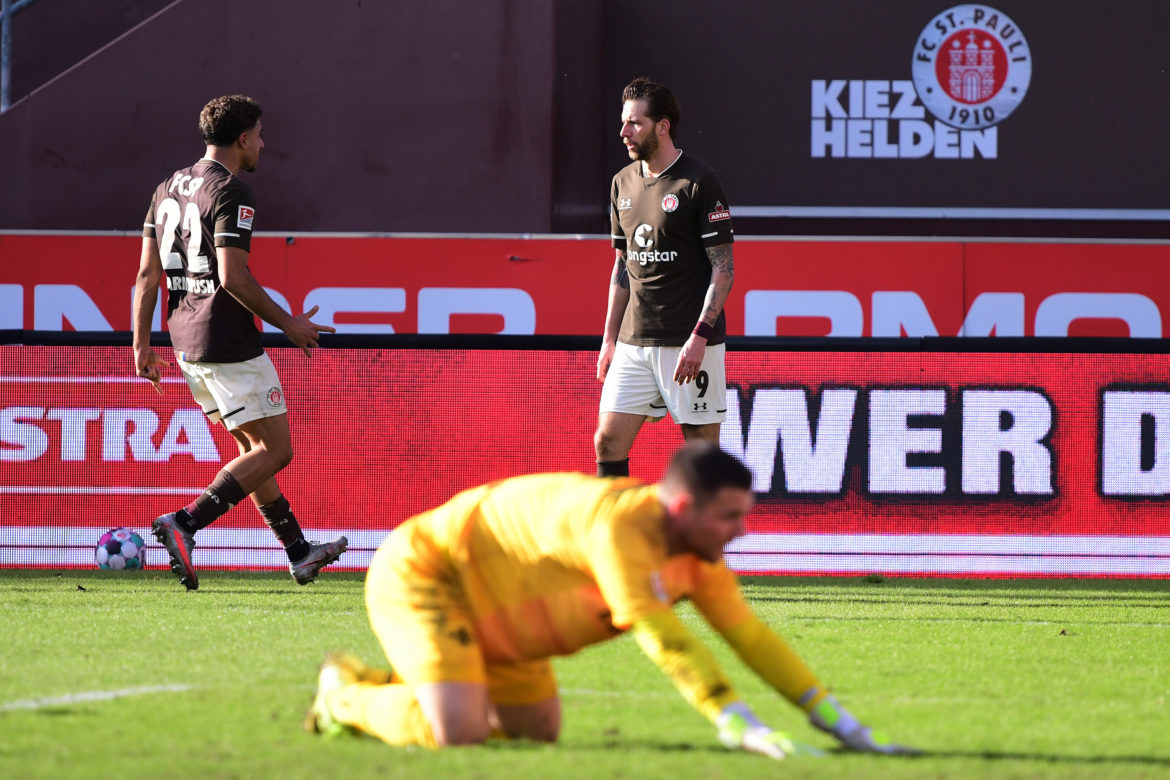

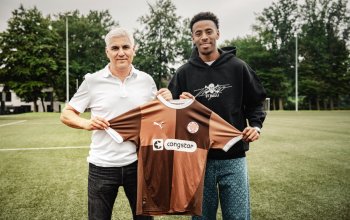
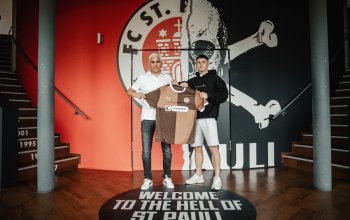
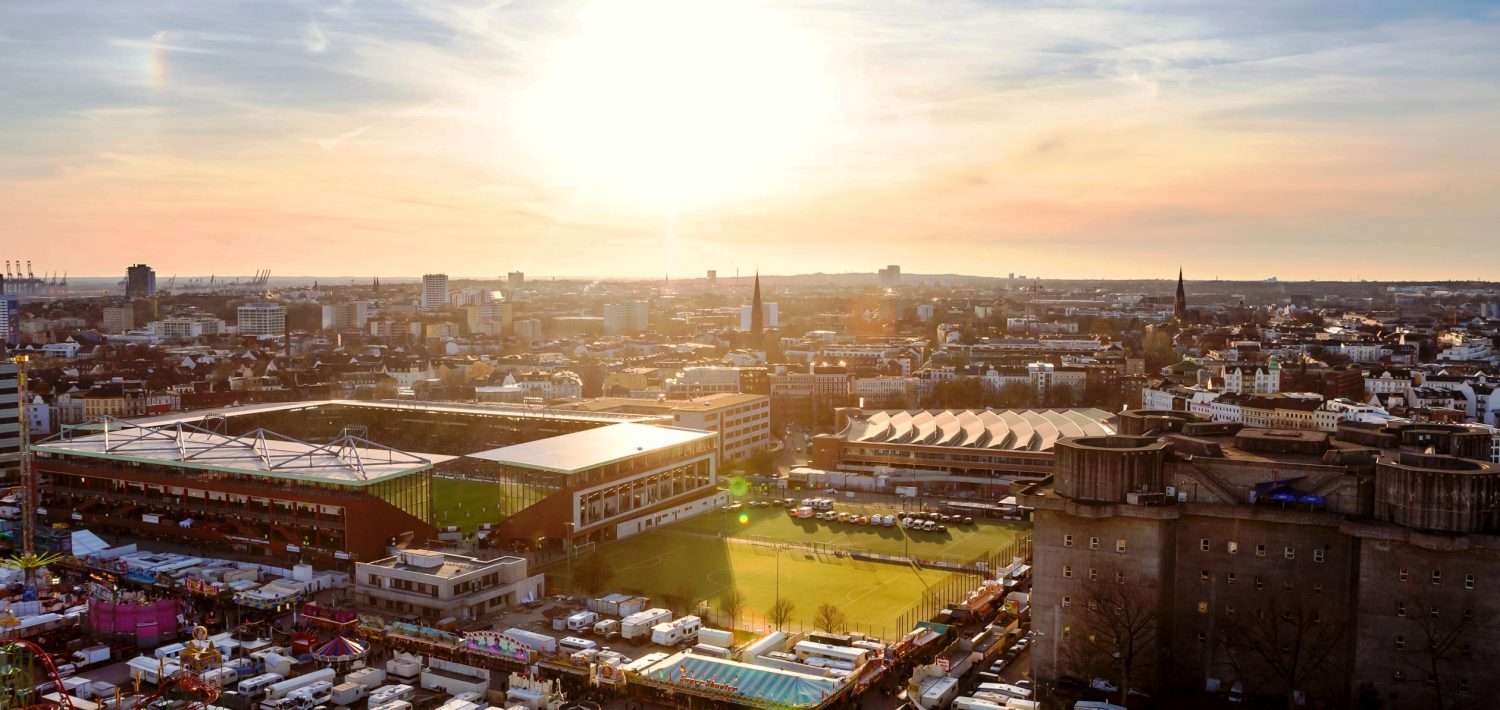
Eric ?
Vielen Dank für die Analyse und die Liebe. Das war ein heißer Ritt, nix für schwache Nerven. Hätten wir vor Ort sein dürfen, hätte sich mal wieder das Stadiondach gehoben, wir hätten in Bier geduscht und wären heute nicht nur immer noch sauglücklich sondern auch komplett stimmlos.
Ich hoffe, Guido liest auch diese Deine Analyse wieder!
Ja, gerade, wenn wir Spiele gewinnen, bekomme ich immer extra große Sehnsucht…
Vielen Dank für deine Analyse!
Wie schätzt du denn die Lage um Burgi ein – bei Transfermarkt steht, dass er bei uns Vertrag bis 30.06.2023 hat – meinst du, da ist eine Ausstiegsklausel für die erste Liga oder so drin und wenn er jetzt so weitermacht ist er nächstes Jahr wieder weg? Er glättet grade so ein bisschen die Wunden, die Mats hinterlassen hat in meinem Herzen und das fände ich wirklich richtig, richtig schade.
LG!
Ich habe keine Ahnung von dem Vertrag, daher kann ich nur mutmaßen:
Ich gehe nicht davon aus, dass Guido wieder mit einem anderen Team als dem FCSP in die erste Liga gehen wird. Und ich gehe auch nicht davon aus, dass er den Verein vorzeitig verlassen wird, wenn seine Leistunge auch weiterhin so sind.